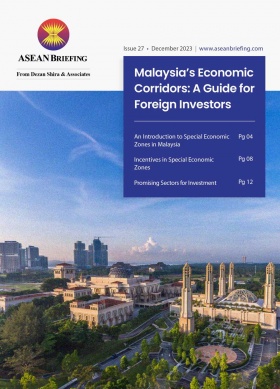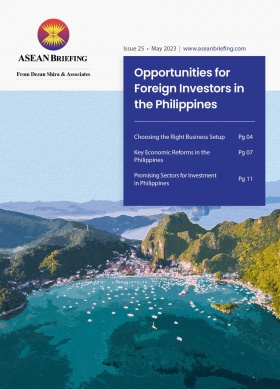Renewable Energy Manufacturing Potential in Southeast Asia
Southeast Asia is one of the most vulnerable regions to climate change. The region’s long coastlines and low-lying areas make the region vulnerable to weather extremes and rising sea levels impacting over 600 million people.
As such, countries in Southeast Asia must adapt their development strategies that are increasingly contributing to global warming such as the region’s reliance on coal and oil as the primary source of energy. If unchecked, global warming could shave some 11 percent of Southeast Asia’s GDP by the end of the century and impact vital sectors such as agriculture, tourism, and healthcare.
Southeast Asia thus has the potential to be a global leader in renewable manufacturing while simultaneously achieving its economic growth targets. Countries in the region already have a strong foundation in manufacturing and renewable energy manufacturing could earn Southeast Asia revenue potentials of between US$160 billion to US$200 billion by 2030. According to a report by the Asian Development Bank, some 50-60 percent of this revenue will be driven by low-carbon mobility and clean power.
Where are the investment opportunities?
Solar PV manufacturing
Southeast Asia has the potential to produce 125-150 GW module capacity by 2030. The region already controls 2-3 percent of the world’s polysilicon and wafer capacity and 9-10 percent of the world’s modules and cells capacity. Most of the production is concentrated in Lao, Malaysia, Vietnam, Cambodia, and Thailand.
Moreover, according to the International Energy Agency, one-third of global PV module exports were supplied by Southeast Asian countries. Most of these PV exports were directed to the US and EU markets.
Countries such as Vietnam, Malaysia, and Thailand have large production capacities and supply both domestic and global demand, whereas Indonesia has more small-scale module assembly companies serving the huge domestic market.
Battery manufacturing
Southeast Asia has a huge potential to produce 140-180 GWh of battery cells by 2030 and become a battery manufacturing hub. Given the region’s abundance in mineral resources, Southeast Asia is naturally advantaged to develop an end-to-end Nickel Manganese Cobalt (NMC) battery ecosystem.
The region is home to 25 percent of the world’s nickel reserves and Indonesia alone possesses the lion’s share of the critical mineral (approximately 21 percent of global reserves).
Southeast Asia’s demand for batteries is expected to grow in the coming decades, growing at an annual rate of 40 percent to 2030, and is expected to reach 70-80 GWh. This demand is being driven by the development of electric vehicle batteries and battery energy storage systems (BESS).
Indonesia, Thailand, and Vietnam have seen increasing demand for EV batteries while demand in Malaysia and the Philippines is mainly being driven by BESS.
Indonesia’s electric battery supply chain
Indonesia’s nickel reserves are making the country indispensable to the global EV industry with the country aiming to be a global EV hub. Global EV makers, which include US’s Tesla and China’s BYD, are said to be finalizing deals to invest in Indonesia, according to the country’s Coordinating Minister for Maritime Affairs and Investment, Luhut Binsar Pandjaitan. Indonesia aims to be one of the top three producers of EV batteries in the world by 2027.
Indonesia first imposed the ban on the export of nickel ores in 2014 and introduced a requirement for producers to purify the raw nickel in Indonesia before export. Foreign investors, primarily from China, began investing in the Indonesian nickel supply chain, particularly in the building of smelters – Indonesia’s Ministry of Energy and Mineral Resources has targeted to have 30 smelters by the end of 2023. This is an ambitious target – Indonesia had only two smelters in 2016 and 15 per current count.
Indonesia’s exports of processed nickel reached an estimated US$30 billion in 2022, a huge increase from just US$1 billion in 2015. The country is expected to account for half the world’s increase in nickel production by 2025.
Conclusion
In conclusion, Southeast Asia stands at a pivotal juncture where transitioning to renewable energy manufacturing not only addresses climate vulnerabilities but also unlocks substantial economic opportunities. By capitalizing on solar PV and battery production, these countries can spearhead global initiatives toward sustainable energy while bolstering their economic growth and resilience in the face of climate change.
About Us
ASEAN Briefing is produced by Dezan Shira & Associates. The firm assists foreign investors throughout Asia and maintains offices throughout ASEAN, including in Singapore, Hanoi, Ho Chi Minh City, and Da Nang in Vietnam, in addition to Jakarta, in Indonesia. We also have partner firms in Malaysia, the Philippines, and Thailand as well as our practices in China and India. Please contact us at asean@dezshira.com or visit our website at www.dezshira.com.







